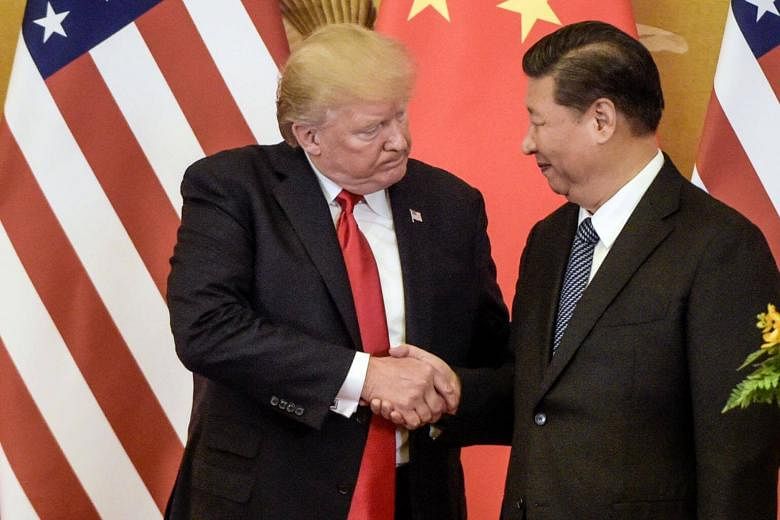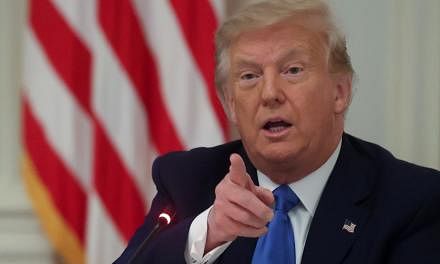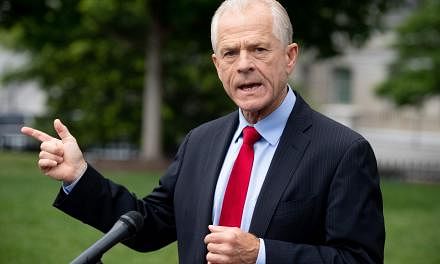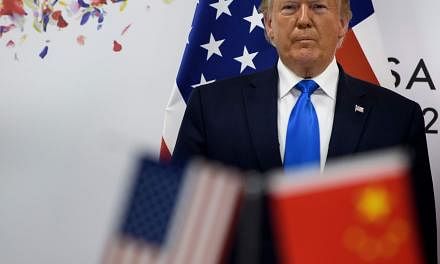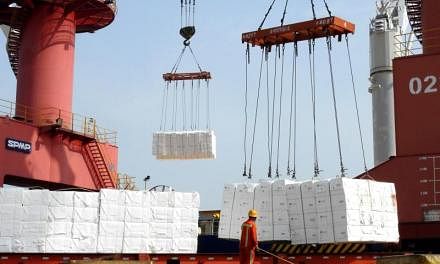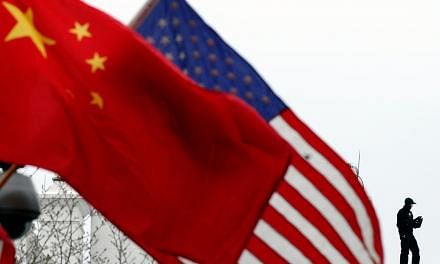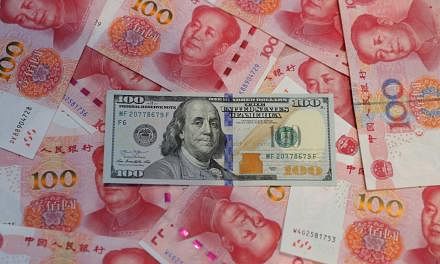BEIJING • The just-concluded trade talks between China and the United States should help clear the way for higher-level negotiations later this month, when US President Donald Trump attends the World Economic Forum in Davos, Switzerland.
Chinese Vice-Premier Liu He, the nation's economic czar, is also expected to go to Washington some time after that.
The trade discussions between mid-level US and Chinese officials, which ended in Beijing yesterday, have raised prospects that the two sides could reach some kind of a deal ahead of the March 1 White House deadline, when US tariffs on some US$200 billion (S$271.3 billion) in Chinese goods are set to rise to 25 per cent, from 10 per cent.
"I am optimistic that they are making progress - the tone of the talks is important, and this tone has been good," said Mr Dean Pinkert, a former commissioner of the United States International Trade Commission. "It is still important to the US government to get credible commitments."
At issue is the extent to which China is willing to offer binding commitments to change trade practices that have long irked Mr Trump.
The scheduled two-day talks extended into a third day as US officials pressed China for more details on how it will live up to its commitments, said people with knowledge of the negotiations who insisted on anonymity to avoid disrupting the talks.
China has made a series of offers to the Trump administration in recent weeks to end the trade war.
But many of the administration's trade hawks regard them as nebulous. They allege that officials in China pressure foreign companies to transfer key technologies to Chinese rivals as a condition for entering the country's market.
They also protest against lavish government subsidies granted through the Made in China 2025 programme to build Chinese firms into global powerhouses in sectors such as commercial aircraft, semiconductors and electric cars.
Chinese officials have agreed to make it easier for multinational corporations to participate in manufacturing development programmes in China. They have also promised to improve intellectual property protection and to ban the forced transfer of technology.
Both sides see reasons to reach a deal soon.
Mr Trump wants to stabilise volatile financial markets, sources said. His Chinese counterpart Xi Jinping is trying to confront weak business and consumer confidence.
Adding to the difficulty of reaching a deal has been the fractious nature of the Trump administration, with the three main government departments involved in the negotiations each pursuing a somewhat different agenda.
US Trade Representative Robert Lighthizer, a hawk on trade issues, has led the push to impose tariffs on imports from China, and has pursued an ambitious agenda that would require China to carry out verifiable and enforceable changes to the basic structure of its economy.
Mr Trump said last month that Mr Lighthizer would be the lead trade negotiator with China.
US Commerce Secretary Wilbur Ross has been pushing since the early days of the administration for a deal that would require China to buy more food, natural gas and other products from the US.
US Treasury Secretary Steven Mnuchin has been pushing for a quick deal that would stop further increases in US tariffs.
But Treasury would preserve indefinitely the 25 per cent tariffs that Mr Trump imposed last July and August on US$50 billion a year in Chinese-made goods, or roughly a tenth of US imports, and the 10 per cent tariffs that he imposed in September on another US$200 billion in Chinese goods.
In the latest sign that the Chinese economy could use a lift from a trade agreement, officials announced yesterday that annual passenger car sales fell last year for the first time in more than 20 years.
Passenger car sales fell to 22.4 million vehicles in 2018, down 5.8 per cent from the previous year.
Complicating the trade talks has been Mr Xi's decision to invite North Korean leader Kim Jong Un to visit Beijing this week.
Mr Trump has been pushing North Korea to abandon the development of missiles with nuclear warheads that can reach the US, but he needs China's cooperation to do so because China is North Korea's main ally.
South Korean news agency Yonhap reported that Mr Kim left Beijing early yesterday afternoon - about the same time that the trade talks ended.
